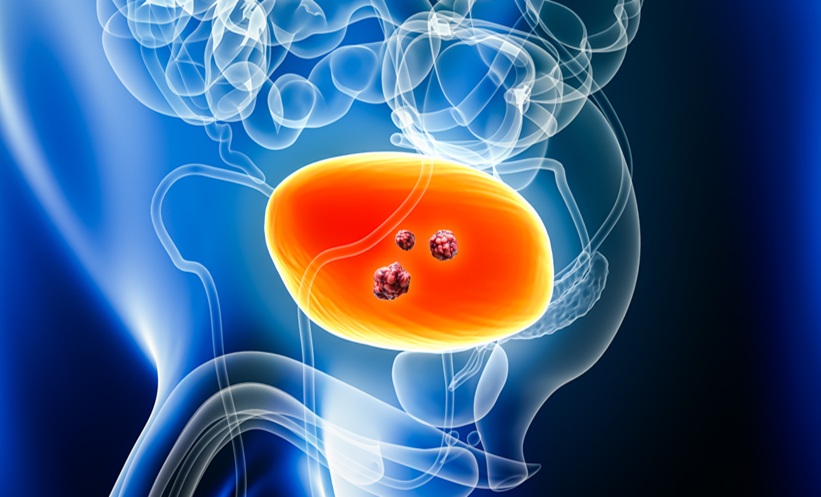Author: Carlotta Zennaro, Editorial Assistant
Citation: EMJ Urol. 2022;10[1]:25-28. DOI/10.33590/emjurol/10151059. https://doi.org/10.33590/emjurol/10151059.
![]()
THE EUROPEAN Association of Urology (EAU) hosted a thematic session on Day 4 of its 37th Annual Congress where three experts discussed the state-of-the-art guidelines on urolithiasis treatment. The experts shared the latest research and their own clinical experience and suggested improvements to the current treatment guidelines, with a focus on protection from radiation exposure for both patients and practitioners, as well as on the effectiveness of pharmacological prophylaxis for high-risk patients.
RADIATION PROTECTION DURING ENDOUROLOGY
The first speaker, Andreas Skolarikos, Professor of Urology, National and Kapodistrian University of Athens, Greece, gave an informative lecture on the importance of effective radiation protection during endourological procedures. As the use of fluoroscopy has become an increasingly popular method to guide these minimally invasive operations, a clear understanding of what radiation side effects are, where radiation comes from, and who should be protected is crucial. Current guidelines use the ‘as low as reasonably achievable’ principle, to ensure that exposure levels remain below the accepted limit. Annually, maximum levels of occupational effective dose limits are 5,000 rem/year for the whole body, 15,000 mrem/year for the lens of the eye, and 50,000 mrem/year for the thyroid in adult patients. Personnel, urologists, and patients are subjected to radiations either as direct radiation, or as scatter radiation from the patient for the medical personnel present in the suite and should therefore all be protected.
Skolarikos highlighted the ways in which radiation exposure can be reduced for patients. Firstly, it is vital to lower magnification, as the greater the magnification, the greater the radiation exposure. Secondly, studies suggest that pulsed fluoroscopy should be used in place of continuous fluoroscopy. Skolarikos shared the results of his own team, which demonstrated that when pulsed fluoroscopy is employed in combination with collimated fluoroscopy the scatter radiation is lowered by five-fold.1 Additionally, the field overlap should be minimised, as using the lateral position of the c-arm significantly increases radiation exposure. Finally, Skolarikos stressed that digital acquisitions should be avoided, and practitioners should instead rely on the last image hold.
Radiation protection for urologists is predominantly available in the form of structural, mobile, or personal shielding. Personal shielding, including lead aprons, thyroid collars, glasses, and gloves, has been proven extremely effective: sensitive areas such as the gonads benefit from 80% protection, while the bone marrow is protected 90.0–90.5%. Furthermore, the X-ray should be close to the patient and should be positioned underneath the patient’s body to help decrease scatter radiation. Medical staff should also keep the distance from the c-arm, use the quicker dilation method for percutaneous nephrolithotomy to reduce exposure, and measure their own exposure levels every month with a dosemeter to ensure the dose of radiation received remains below the acceptable limits.
MEDICAL PROPHYLAXIS IN THE HIGH-RISK PATIENT: TEMPORARY VERSUS LIFELONG
The next speaker was Giovanni Gambaro, Professor of Nephrology, University of Verona, Italy, who discussed the pharmacological prophylaxis in high-risk patients. Opening his lecture, Gambaro emphasised the importance of having a well-defined description of who high-risk patients are in order to correctly determine who might require lifelong medical prophylaxis.
Gambaro firstly identified recurrent stone formers as belonging in the high-risk category, with only 45% of patients recurring in 10 years and only 30% recuring in 5 years, and within that timeframe only 10–15% recurring more than three times.2 As there is no biomarker or algorithm to determine which patients might truly be recurrent stone formers, it becomes necessary to rely on observation alone. Furthermore, certain types of stones are associated with high risk of recurring and damaging the kidneys; these types of stones include cystine, brushite, struvite, and uric acid stones.
Moreover, those with other clinical risks associated with stones are also categorised as high-risk patients. For instance, conditions such as primary and secondary hyperoxaluria, neurological bladder, distal renal tubular acidosis, or anatomical abnormalities of the kidneys and urinary tract are all linked with a higher risk of acute and/or chronic renal failure. Patients with medullary sponge kidney, primary hyperparathyroidism, malabsorptive syndromes, as well as certain genetic conditions are also in the high-risk group as they show increased risk of developing metabolic bone disease. Finally, certain professions are included in this category, such as aircraft pilots, surgeons, and any other profession linked with infrequent voiding syndrome.
Gambaro concluded by reiterating that all these factors, including previous history of stones, associated risks to the bones and kidneys, and professional occupation, should be evaluated to identify high-risk patients who might require lifelong pharmacological prophylaxis.
WHAT IS NEW IN THE UROLITHIASIS GUIDELINE?
The final speaker of the thematic session was Robert Geraghty, Urology Registrar, Freeman Hospital, Newcastle upon Tyne, UK, who presented the updated urolithiasis guidelines. Four separate sections were incorporated in the new urolithiasis guidelines: best clinical practice in urinary stone intervention, a new section on radiation exposure, new diagnostic algorithms, and new follow-up algorithms.
Firstly, new sections detailing the best clinical practice for preoperative management of urolithiasis were included, as well as for the three most commonly performed procedures for stone disease, namely shockwave lithotripsy, ureteroscopy, and percutaneous nephrolithotomy.
Secondly, the new section on radiation exposure delineates the risk for both patients and staff. Geraghty discussed evidence of a study on atomic bomb patients demonstrating that the risk of malignancy from ionising radiation is both age and dose dependent; this data led to the recommendation to minimise the use of ionising radiation in stone formers, especially in patients with recurring disease. Furthermore, with the maximum annual occupational exposure being 50 mSv, the guidelines state that all the necessary personal protective equipment should always be worn while performing endourological procedures, consisting of lead aprons, thyroid shield, and lead glasses. Access to fluoroscopy for guidance remains mandatory in endourology, as there is limited evidence on the effectiveness of fluoroscopy-free operations, especially when considering complex cases.
Geraghty presented the two new diagnostic algorithms introduced in the urolithiasis guidelines. The novel calcium oxalate diagnostic algorithm for high-risk stone formers can be used in conjunction with the pre-existing algorithm on risk stratification. This algorithm aims to help differentiate particular causes of calcium oxalate stone formation in high-risk patients who have had a 24-hour urine collection to allow for the development of targeted therapies. Similarly, the uric acid stone diagnostic algorithm for high-risk stone formers was also introduced, with the goal of differentiating causes of uric acid stone formation in high-risk patients who have had a 24-hour urine collection to allow for the development targeted therapies. Geraghty emphasised that uric acid stones are high risk stones by themselves, so all patients with a uric acid stone should be having a 24-hour urine collection.
Finally, a section on new follow-up algorithms was included in the urolithiasis guidelines as there was unclear guidance on follow-up of stone patients. Consequently, the panel undertook a systematic review and meta-analysis of all available literature on follow-up. Unfortunately, there was a lack of high-quality data; therefore, the panel agreed on a series of consensus statements regarding follow-up using the data from the review. Evidence gathered from the review and meta-analysis showed that for high-risk patients the data was particularly heterogeneous. For those on medical treatment, 75% of patients remained stone-free after 5 years, while for those not on prophylaxis the figure dropped to 56% after 5 years. However, given the poor data, the panel advises lifelong follow-up for these patients.








